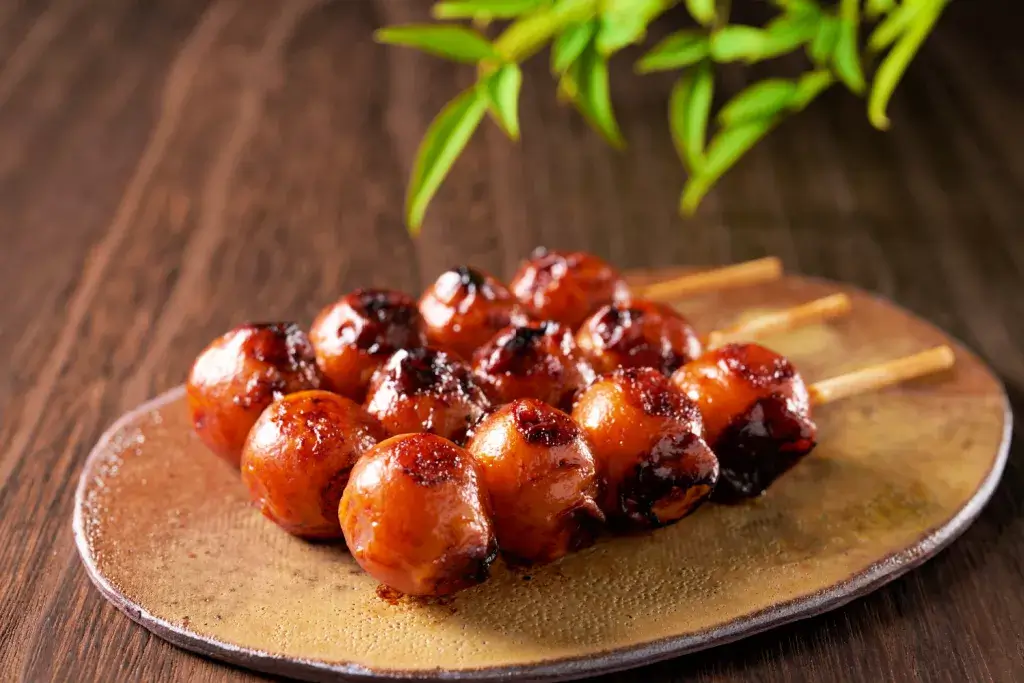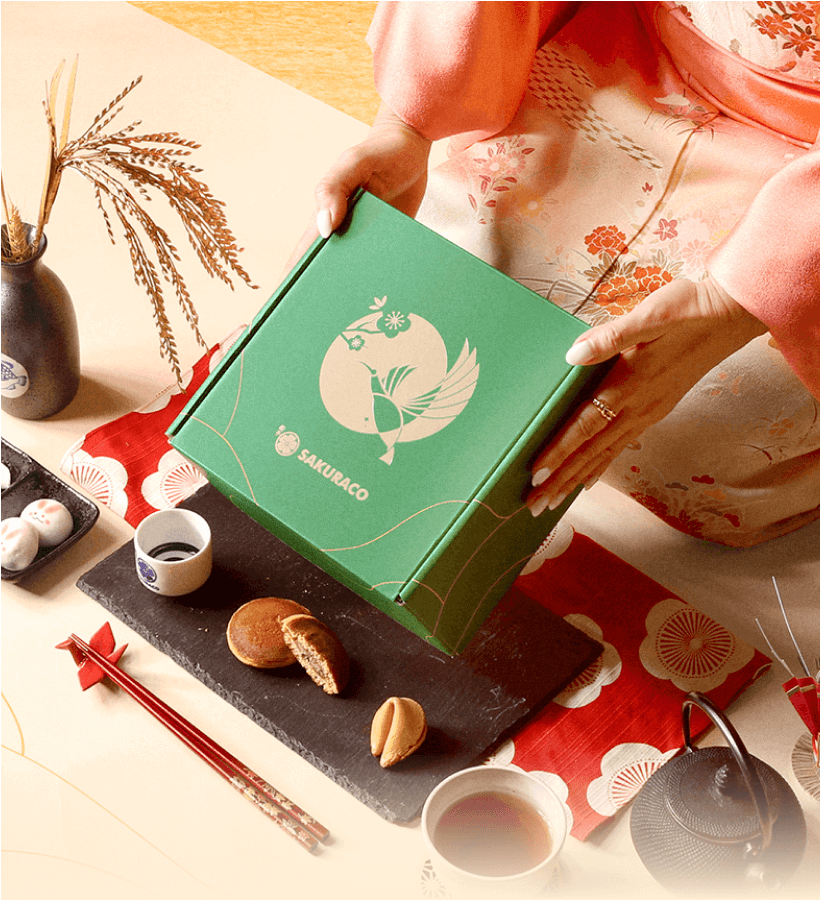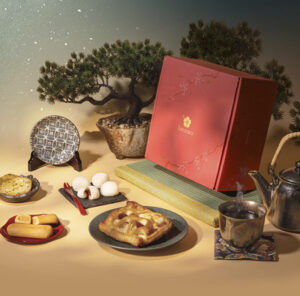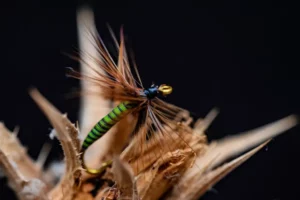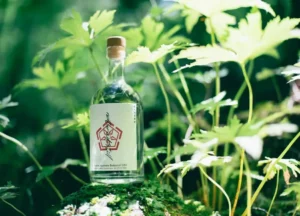If you’ve ever visited Japan or seen photos of its food, you might have spotted little rice dumplings on a stick. These chewy treats are called mitarashi dango, and they’re one of Japan’s most beloved traditional sweets. Continue reading to discover how these delectable dumplings became a Kyoto classic and how they continue to enrich Japan’s culture today.
Table of Contents
ToggleWhat is mitarashi dango?
Mitarashi dango is a type of wagashi (traditional Japanese sweet). It’s made of small, round rice dumplings. Typically, there are three to five dumplings on a single wooden skewer. Each dumpling is chewy and soft, a little like mochi (a traditional Japanese rice cake), but distinct from it.
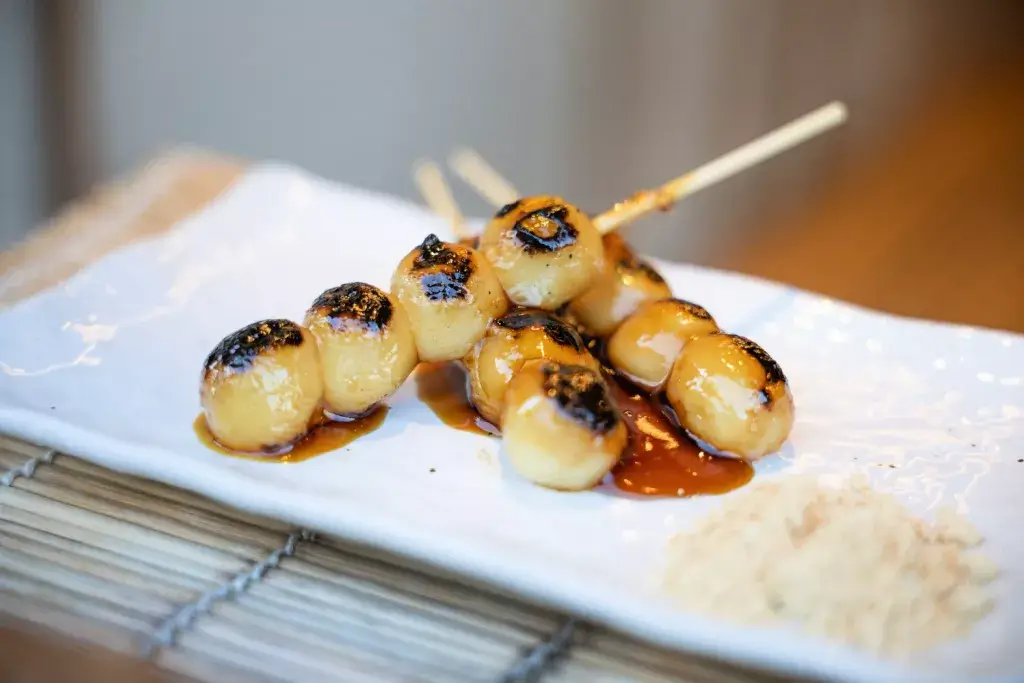
What makes mitarashi dango special is its shiny glaze. The sauce is both sweet and salty, made from soy sauce, sugar, and sometimes mirin (sweet rice wine). When grilled, the dumplings get light brown marks that add a smoky flavor. The glaze thickens and caramelizes slightly, resulting in a rich, balanced taste with each bite. You can find mitarashi dango almost anywhere in Japan. It’s sold at street stalls, tea houses, and even convenience stores.
The Ingredients
To make mitarashi dango, people use two kinds of rice flour, joshinko (non-glutinous rice flour) and shiratamako (glutinous rice flour). Joshinko is made from regular short-grain rice, while shiratamako is made from sticky rice. When mixed with water and sugar, these flours turn into a smooth, soft dough. The dough is then rolled into small round balls, about the size of a large marble.
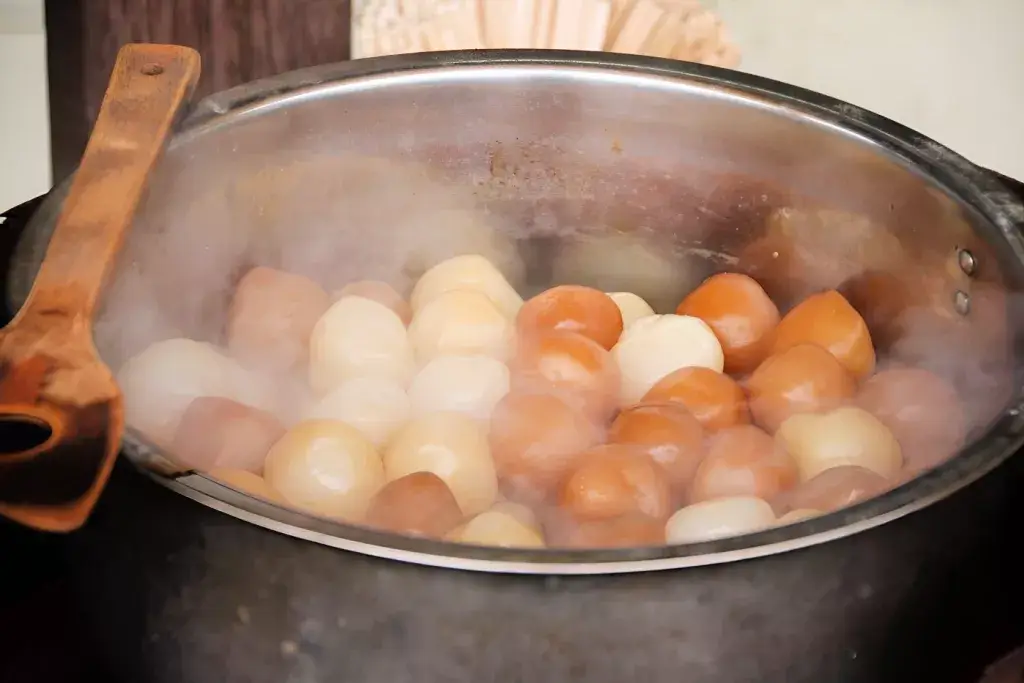
Next, the dumplings are boiled in hot water until they rise to the surface and become firm. After that, they are often grilled or toasted to give them a slightly smoky flavor. The glaze for mitarashi dango is simple but full of taste. It’s made from sugar, soy sauce, water, and a small amount of starch to thicken it. Some cooks also add mirin to impart a gentle sweetness to the glaze. When poured over the warm dumplings, the sauce becomes shiny and golden, coating each one perfectly.
A Snack with a Story
Mitarashi dango isn’t just delicious; it also has a fascinating history. This sweet is believed to have started in Kyoto, Japan’s ancient capital. More specifically, it comes from the Kamo Mitarashi Chaya, a small traditional tea house.
The tea house is located near Shimogamo Shrine, one of Kyoto’s oldest and most sacred shrines. The word mitarashi comes from the Mitarashi Pond at the shrine. Long ago, visitors washed their hands in this pond to cleanse themselves before praying. People say the round dumplings look like the little bubbles that rise from the pond’s water. That’s how this sweet and shiny treat got its beautiful name and special meaning.
Craving more treats like mitarashi dango? Then check out Sakuraco! Sakuraco delivers traditional Japanese snacks, sweets, teas, and more from local Japanese makers right to your door!
The Emperor’s Legend
There’s also a fascinating legend behind the shape of mitarashi dango. Long ago, Emperor Go-Daigo, who ruled Japan in the 1300s, visited Shimogamo Shrine. While washing his hands in the Mitarashi Pond (purifying water pond), he noticed five bubbles appear. People said these bubbles represented the human body, one for the head and four for the arms and legs.
To honor the gods, the emperor offered five rice dumplings, one small and four larger ones. This special offering inspired the dango’s unique design that people still use today. At the Kamo Mitarashi chaya (tea house), the dango skewers follow this same tradition. One dumpling sits slightly apart from the other four, symbolizing the head and body of a person.
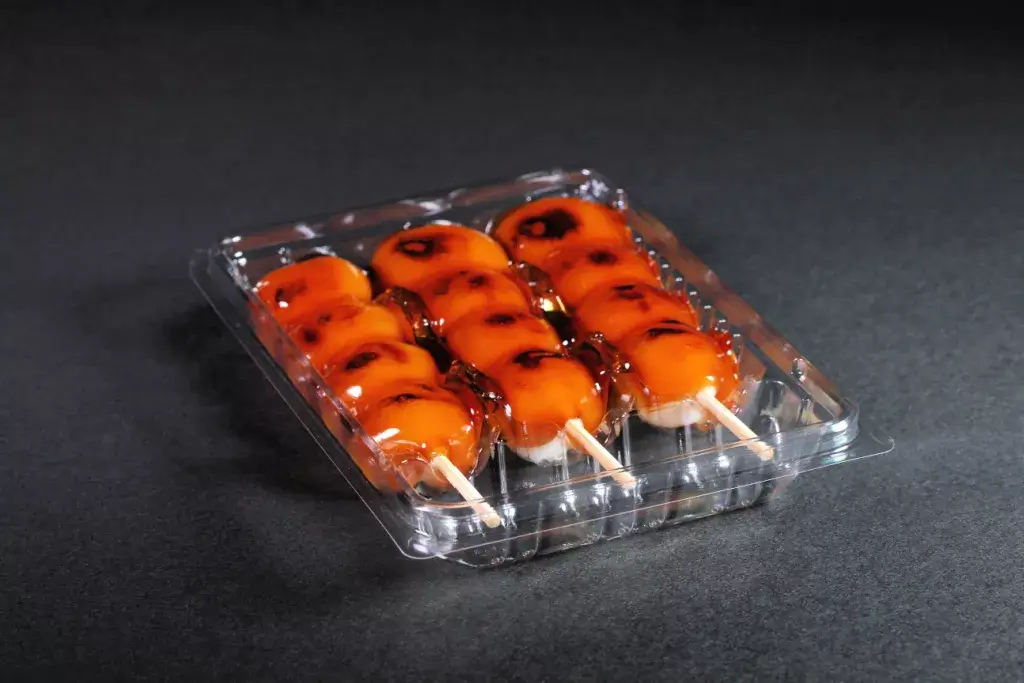
A Kyoto Favorite
Kyoto is renowned for its serene atmosphere, stunning temples, and authentic cuisine. Mitarashi dango fits perfectly into that image. When you walk through Kyoto’s old streets, you’ll see people enjoying warm skewers of dango.
The sweet smell of soy glaze fills the air near food stalls and tea houses. At Kamo Mitarashi Chaya, the glaze is made with brown sugar for a deeper flavor and rich, dark color. Many locals say this is the best place to try the authentic version.
Different Kinds of Dango
While mitarashi dango is one of the most popular kinds, it’s far from the only one. You can find many types of dango across Japan. Goma dango is coated in sesame seeds and has a nutty flavor. Hanami dango, available in pink, white, and green, are a popular treat enjoyed during the cherry blossom season. Tsukimi dango are plain white dumplings stacked in a pyramid for moon-viewing festivals.
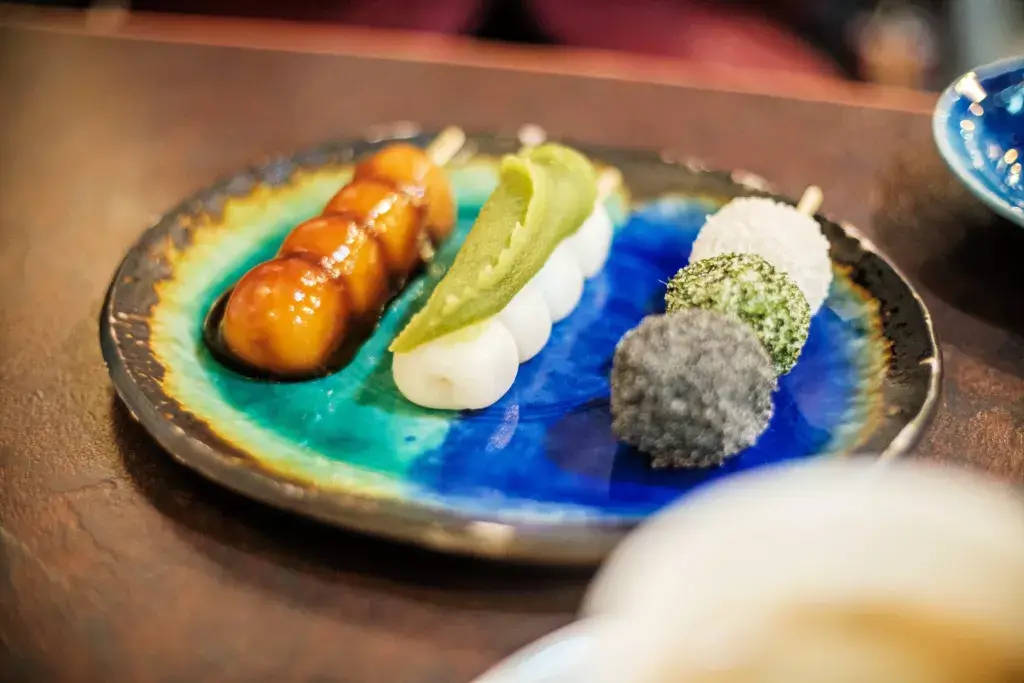
Kinako dango are covered in roasted soybean powder. Yomogi dango are green dumplings made with Japanese mugwort. Kurumi dango are topped with walnut paste. Sasa dango are wrapped in bamboo leaves and are a specialty from Niigata Prefecture. Each type of dango celebrates a specific season or event, illustrating the deep connection between food and nature in Japan.
Dango vs. Mochi
Some people think dango and mochi are the same, but they’re actually different. They just look a bit alike. Mochi is made from steamed glutinous rice that’s pounded until smooth and stretchy. Dango is made from rice flour mixed with water, making it softer and less sticky than mochi. Both are delicious, but they have different textures and are eaten in different ways.
Making Mitarashi Dango at Home
You don’t need to travel to Japan to enjoy mitarashi dango, you can make it at home! All you need are rice flours, water, soy sauce, sugar, and a little cornstarch. Mix the dough, shape it into small balls, and boil them until they float to the surface. Then, grill them lightly on a pan or over an open flame until they develop golden spots. Brush on the sweet soy glaze and enjoy! Some people add kinugoshi tōfu (silken tofu) to the dough for extra chewiness. Others create fun shapes, such as hearts, animals, or even tiny pandas!
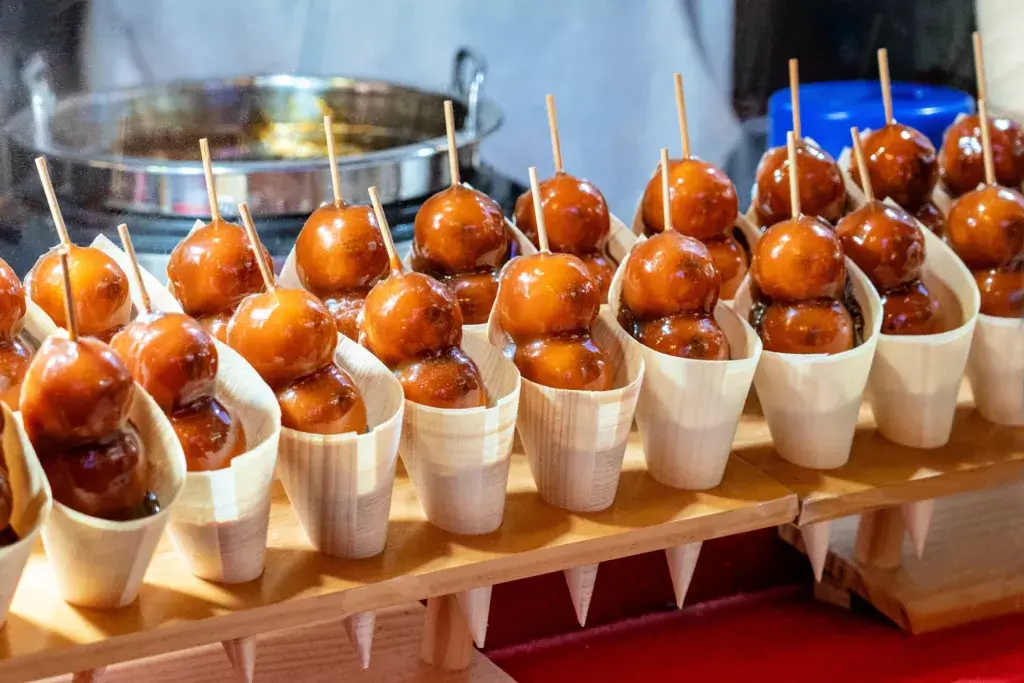
From Kyoto to the World
What started as a Kyoto specialty is now loved around the world. You can find mitarashi dango in convenience stores, Japanese bakeries, and dessert bars in many countries. Its mix of sweet and salty flavors makes it special among desserts. The chewy texture is fun to eat. Whether warm or cold, it’s always satisfying.
A Bite of Tradition
Mitarashi dango is more than just a snack. It’s a piece of Japanese culture that connects people to history, festivals, and community. Next time you visit Japan, stop by Kyoto and try the original version at Kamo Mitarashi Chaya. Or make your own at home to enjoy a little taste of Japan wherever you are. Have you ever tried mitarashi dango before? Would you like to taste the original version from Kyoto? Let us know in the comments below!

